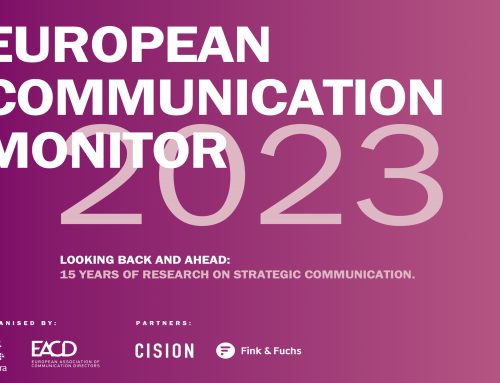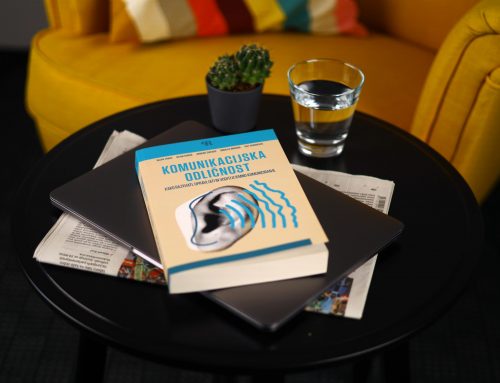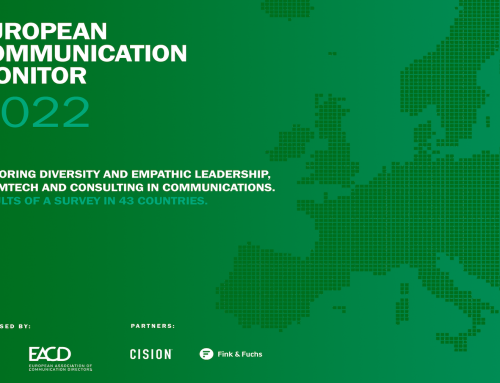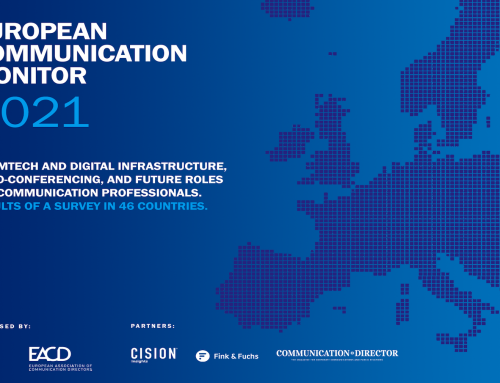Study validates fake news as an indefinite challenge for organisations and society
This year’s European Communication Monitor was launched and discussed during the European Communication Summit 2018 on June 13 in Berlin. This year’s edition of the largest survey of the communications profession and trends in strategic communication is based on almost 3,100 respondents from 48 European countries, providing valuable insights for public relations, corporate and political communication.
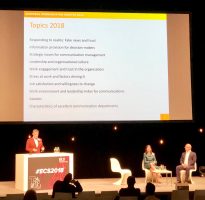 Besides key trends like fake news, the survey explores communications’ contributions to organisational success as well as the work environment for communication professionals in Europe. Work engagement and stress, job satisfaction and its drivers as well as the status of leadership in communication units are explored with additional detailed analyses for 22 countries. Comparable global data for North America, Latin America and Asia-Pacific make the Global Communication Monitor series even more relevant. Results of the studies on other continents will be available later this year.
Besides key trends like fake news, the survey explores communications’ contributions to organisational success as well as the work environment for communication professionals in Europe. Work engagement and stress, job satisfaction and its drivers as well as the status of leadership in communication units are explored with additional detailed analyses for 22 countries. Comparable global data for North America, Latin America and Asia-Pacific make the Global Communication Monitor series even more relevant. Results of the studies on other continents will be available later this year.
Mistrust in times of fake news and a volatile environment
Business leaders and those in charge of other organisations across Europe have to deal with a volatile environment. The threat of global trade wars and the search for a new balance between national and multilateral interests makes it difficult to navigate towards the future. Communication experts can support organisations in different ways: They can deal with fake news and protect reputation. And they can help to establish and regain trust – which was rated the most important challenge in the near future in the European Communication Monitor for the first time. “Trusted content, trusted leaders and trusted organisations are a rock in the surf in today’s media environment”, says lead researcher Prof. Ansgar Zerfass from the University of Leipzig.
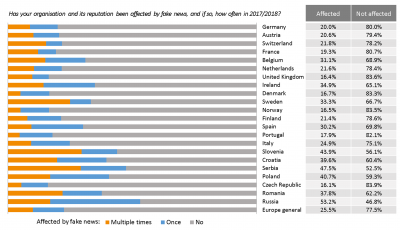 Despite the persisting debate about fake news across Europe (agreed upon by 55.8 per cent of the respondents), this does not filter into the day to day experiences of communication practitioners (24.4 per cent). The most affected by fake news are government-owned, public sector and political organisations (44.6 per cent have been affected at least once in 2017/2018). Professionals based in Russia report the strongest impact of fake news on their organisations (53.2 per cent), followed by Serbia, Slovenia and Poland (all more than 40 per cent). The sources of fake news follow the origins of the debate with social media being the main source of misleading content (81.3 per cent), but mass media (59.6 per cent) can also originate this form of information. Most communication departments and agencies are not sufficiently prepared to identify fake news: Only 12 per cent of affected organisations have established advanced routines.
Despite the persisting debate about fake news across Europe (agreed upon by 55.8 per cent of the respondents), this does not filter into the day to day experiences of communication practitioners (24.4 per cent). The most affected by fake news are government-owned, public sector and political organisations (44.6 per cent have been affected at least once in 2017/2018). Professionals based in Russia report the strongest impact of fake news on their organisations (53.2 per cent), followed by Serbia, Slovenia and Poland (all more than 40 per cent). The sources of fake news follow the origins of the debate with social media being the main source of misleading content (81.3 per cent), but mass media (59.6 per cent) can also originate this form of information. Most communication departments and agencies are not sufficiently prepared to identify fake news: Only 12 per cent of affected organisations have established advanced routines.
Information insights for decision-makers
In today’s digital and mediatised world organisations face a plethora of rapid-fire information that is ubiquitous. Hence, it needs algorithms for data processing and interpretations. Collecting and preparing such information as well as keeping decision-makers and (internal) clients up to date with useful information is a core task for communicators and helps them to fulfil their role. The results of this year’s monitor show that providing information to decision-makers is indeed a common practice across Europe. For 64.7 per cent this is a core task that helps to gain recognition for communications (68.0 per cent agree) and it offers great opportunities for positioning their unit (56.8 per cent).
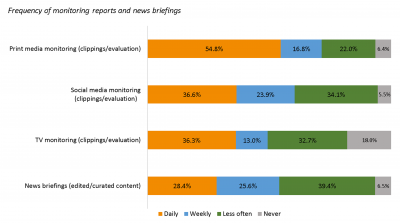 By far the most important and most frequently provided information by communication specialists is about news in ‘gate kept’ media (mass media with professional journalists) and social media. Media monitoring reports and curated news briefings are provided regularly by respectively 74.6 and 59.6 per cent of the communication departments and agencies.
By far the most important and most frequently provided information by communication specialists is about news in ‘gate kept’ media (mass media with professional journalists) and social media. Media monitoring reports and curated news briefings are provided regularly by respectively 74.6 and 59.6 per cent of the communication departments and agencies.
However, only monitoring reports about the published discourse in print outlets (newspapers, magazines) are provided on a daily basis in the majority of organisations (54.8 per cent). Daily insights on what is going on in social networks or on television are delivered less often (by just over 36 per cent). Only 28.4 per cent of the communication departments and agencies in Europe provide executive news briefings on a daily basis, i.e. advanced types of reporting with edited or curated content that delivers deep insights for decision-makers.
Job satisfaction and work stress in the communications profession
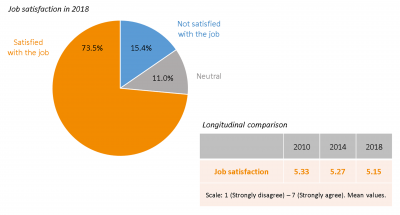 Longitudinal comparison with previous ECM surveys in 2010 and 2014 reveals a slow decline in overall job satisfaction. 28.9% of the surveyed practitioners would like to change their current employer within the next twelve months, and 5.2 per cent want to move out of the communications sector all together. However, three quarters of the communication professionals in Europe are satisfied with their job. Overall satisfaction is the strongest in consultants or agencies (79.0 per cent) and in countries like The Netherlands (86.2 per cent), Finland (81.5 per cent) and Germany (81.2 per cent). The strongest drivers for job satisfaction are interesting and manifold tasks, career opportunities and appreciation by superiors and (internal) clients.
Longitudinal comparison with previous ECM surveys in 2010 and 2014 reveals a slow decline in overall job satisfaction. 28.9% of the surveyed practitioners would like to change their current employer within the next twelve months, and 5.2 per cent want to move out of the communications sector all together. However, three quarters of the communication professionals in Europe are satisfied with their job. Overall satisfaction is the strongest in consultants or agencies (79.0 per cent) and in countries like The Netherlands (86.2 per cent), Finland (81.5 per cent) and Germany (81.2 per cent). The strongest drivers for job satisfaction are interesting and manifold tasks, career opportunities and appreciation by superiors and (internal) clients.
Communication professionals are often expected to be high performers in a hard-working culture. No wonder that four out of ten communication professionals (39.0 per cent) in Europe feel tense or stressed out during their working day. At the same time 25.0 per 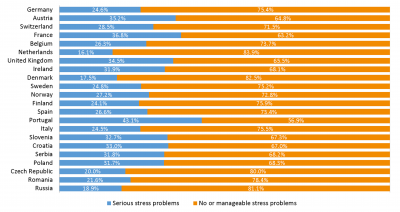 cent do not have the appropriate resources to manage this experience. A cluster analysis reveals that one in four (27.9 per cent) has serious stress problems (reporting stress and not being able to manage it). Following this theme, Portugal, France and Austria report the largest proportion of communication professionals with serious stress problems.
cent do not have the appropriate resources to manage this experience. A cluster analysis reveals that one in four (27.9 per cent) has serious stress problems (reporting stress and not being able to manage it). Following this theme, Portugal, France and Austria report the largest proportion of communication professionals with serious stress problems.
The most important drivers of work stress are the need to be constantly available outside working time to access emails and phone calls, too heavy a work load, the lack of opportunity for growth or advancement, information overload, as well as long working hours. The latter is most significant for professionals working in consultancies and agencies.
Leadership makes a difference
A supportive work environment enables practitioners to exploit their competencies and accomplish organisational goals. The study measured the status in communication departments and agencies across Europe by assessing organisational culture, trust in the organisation, leader performance, overall job satisfaction, and work engagement. Advanced statistical analysis shows that engagement is the key factor that links strongly to all other aspects. Engagement can be influenced by leaders, so in the end leadership makes the difference: educating, mentoring and promoting leadership skills should be a priority in the field.
Enhancing leadership performance, however, is a continuing challenge for the profession. The study reveals that every fifth communication leader (19.2 per cent) lacks leadership skills. A lack of performance at higher levels is clearly visible – especially when noting that subordinates rate the strategic involvement, ethical orientation and knowledge of the highest-ranking communicators clearly worse than the leaders themselves.
Statements from the EUPRERA lead researcher and the EACD Managing Director
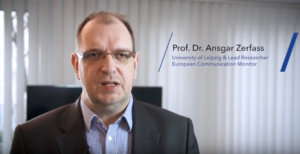 Professor Ansgar Zerfass, lead researcher of the survey, explained:
Professor Ansgar Zerfass, lead researcher of the survey, explained:
“During the last 12 months we have experienced significant events on the world geo-political stage with impact and implications for strategic communication. What stands out most of all from this year’s Monitor is the rising importance of building and maintaining trust by 39.5 per cent of all the respondents. The fact that fake news and propaganda have become more important and traditional mass media is losing ground makes public communication in general – and the communication sector specifically – more competitive than ever before. The public battlefield of meaning is fully erupted from the offline to the online world and back and forth.”
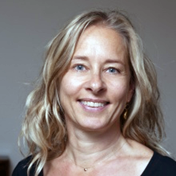 Inge Wallage, Managing Director of the European Association of Communication Directors (EACD), added:
Inge Wallage, Managing Director of the European Association of Communication Directors (EACD), added:
“Another crucial topic covered by this year’s monitor is the flow of information from communication teams to decision makers. Today’s media landscape requires communication professionals to react promptly via multiple media channels. The study delivers crucial findings on the practices that all modern departments must develop to retain a competitive edge.”
Report and further material available
The PDF report with full results as well as more material like 10 Key insights of the 2018 Monitor are available here.


